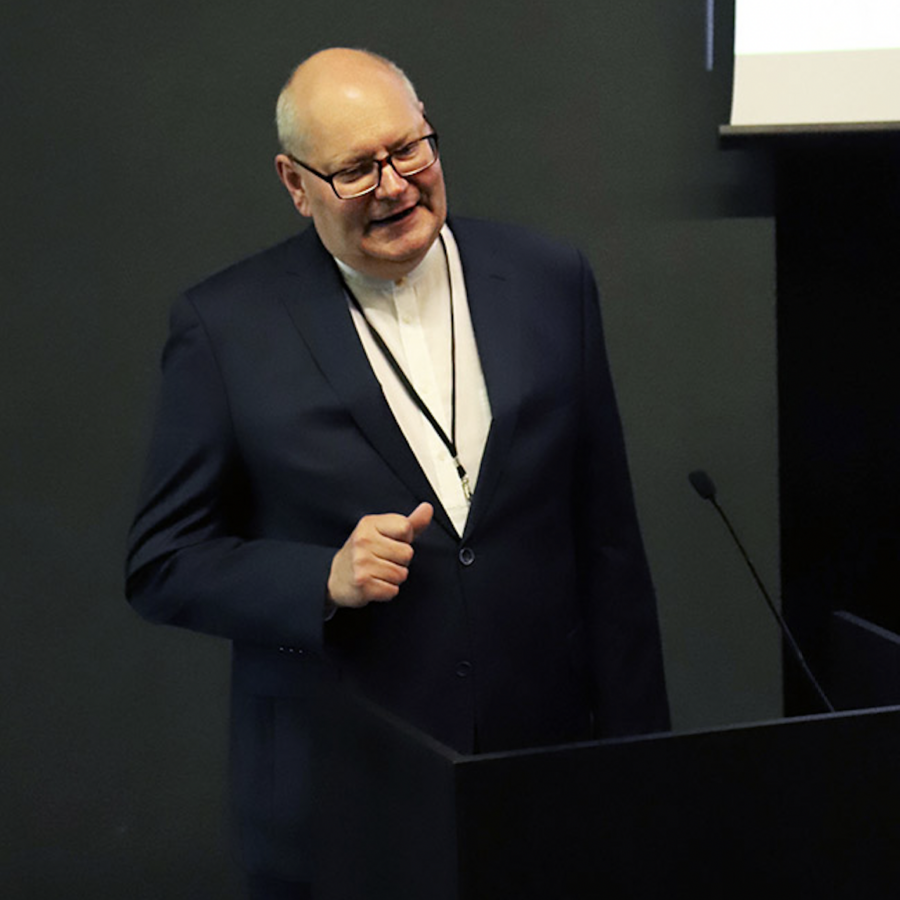
Dr Soolep 2019. aastal konverentsi "Ruum ja digireaalsus avamisel". Foto: Lisanna Remmelkoor
Antoine Picon, Professor of the History of Architecture and Technology at Harvard University’s School of Design, will give a public lecture “Artificial Intelligence and the Future of Design” in the Main Hall of EKA on Thursday, May 5 at 6 pm. Professor Picon’s lecture is a prologue-event for the conference “Innovation and Digital Reality” organised by the Faculty of Architecture of EKA – the conference will take place on September 6, 2022 and is also part of the Tallinn Architecture Biennale TAB programme, which always looks to the future.
We asked Dr Jüri Soolep, the main organizer of the conference, some questions about the autumn conference – and they also help to give context to Professor Picon’s lecture.
Talking about the conference, you point out that the world has changed profoundly since our last Digitality conference in 2019. How did the corona pandemic affect the world of architecture? Was it rather a so-called change of needs and a change of thinking on the part of the consumer, or is the architecture now being created differently because the pandemic changed the thinking of the architects?
The pandemic does have a serious impact on architecture in general. First, the importance and existentiality of studio teaching in architectural education was clearly illustrated: learning and teaching architectural creation without direct human contact is very difficult, if not impossible. Secondly, the indistinguishability of culture and space becomes clearer, the lack of direct spatial experience begins to weigh clearly and inevitably when staying put at home. Third, the simulation of the worlds of film, game and VR has gained serious momentum, with which architecture, as an immediate experience, has to compete even more after the pandemic.
What innovations in digital reality are currently the most exciting in architecture?
A very realistic simulation of both real and fantastic spaces. The direct design activity between 3D VR and the formalised models of space is also gaining momentum.
How does the topic of this year’s TAB fit in with the content of the conference? What are the connections?
The Tallinn Architecture Biennale has always aimed to peek into the future of architecture and cities, and in this sense, TAB makes for a very natural partner for the Faculty of Architecture. After all, because of our mission alone – to educate tomorrow’s architects – we need to be several rounds ahead of the rest of society: to be able to notice emerging thought, economic and technological processes while they are still in their infancy, and to transfer them to spatial education.
If most human work becomes pre-designed through digital platforms, what are the implications for architecture / architectural learning / construction?
It must be emphasised here that any work in the digital world becomes a cognitive simulation, and when changes are made to it, it becomes, to a greater or lesser extent, design. Thus digital reality makes us all make design decisions. There is a lot to teach here about architecture, design and art: how to make decisions that allow you to create comprehensive solutions using inadequate background material; how to find creative and original solutions and how to create strategic and meaningful structures.
As we move more and more into digital reality in our lives, work and entertainment, what will become of the space we build? Is the need for it drastically declining, or do we need a new type of space and the demand for construction and the creation of architects is increasing?
This is a difficult question. It is optimistic that all the innovations in the history of art and the media in human history have survived: books, theatre, cinema, performing arts, etc. have never completely destroyed older creative forms. Digital reality also increases the work of architects, designers, softwriters, etc. – the whole virtual sphere, if the aim is to have good quality, needs planning. However, pessimistically, the impact of architecture and the arts is diminishing, or more precisely, less money and human capital is being invested in, which unfortunately reduces its quality. It can also be assumed that architects / designers with lower / average skills and talent will be marginalised by one of the more evolving AIs. But fortunately that moment has not yet arrived.
***
You are all cordially invited on May 5 at 6 pm to the lecture of Professor Picon in the Main Hall of EKA – all architecture and design students, professionals and just interested people are welcome to listen; there will be no live webcast.
The lecture is free and in English.
